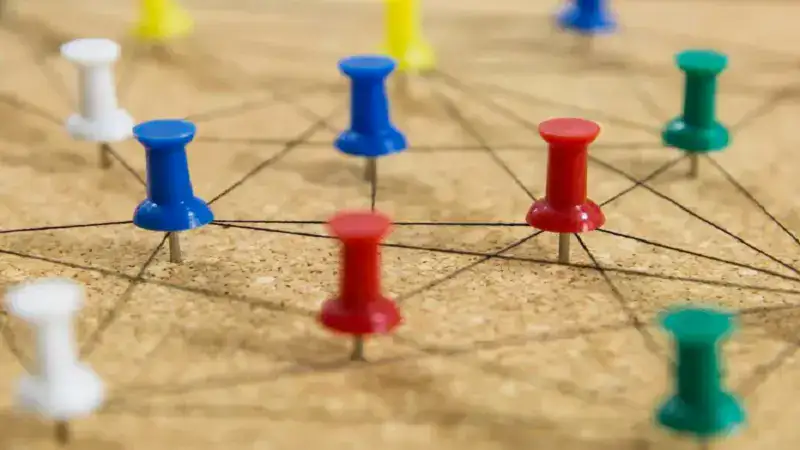In the realm of puzzle enthusiasts, “Connections” by the New York Times stands as a beloved challenge. Whether you’re a seasoned solver or a newbie, discovering the answers for “connections nyt answers” can offer both excitement and a sense of achievement. This article will guide you through effective strategies and tips to find “Connections” NYT answers, ensuring that you enjoy the process while honing your puzzle-solving skills.
Understanding the Puzzle
“Connections” involves finding relationships between seemingly unrelated clues. These clues can span various topics, including history, literature, science, and pop culture. The objective is to identify the common thread that links the clues together.
Step 1: Analyze the Clues
Start by carefully reading all the provided clues. Note any words or phrases that immediately stand out. Sometimes, a clue may seem unrelated at first glance, but it can provide essential context when paired with another clue.
Example:
Consider these four clues:
- Apple
- Microsoft
- Amazon
Initially, these might appear as just tech giants. However, they all belong to the same industry and play pivotal roles in shaping the technology landscape. Recognizing this connection quickly can lead you to the correct answer.
Step 2: Identify Common Categories
Next, categorize the clues. Grouping them based on common characteristics can reveal hidden connections nyt answers. Categories can include genres, time periods, professions, and more. This method helps in narrowing down potential connections.
Example:
Take these clues:
- Shakespeare
- Tolstoy
- Hemingway
- Orwell
By categorizing them as famous authors, you can start exploring connections based on their literary contributions, historical context, or writing styles.
Step 3: Consider Synonyms and Homonyms
Sometimes, clues involve wordplay. Synonyms and homonyms can offer valuable insights into the connections. A synonym can shift the perspective of a clue, revealing its true nature, while a homonym can introduce a double meaning.
Example:
- Bark (dog)
- Bark (tree)
Both clues use the same word but refer to entirely different contexts. Identifying this dual meaning can help you see the connection between the clues more clearly.
Step 4: Utilize External Resources
Don’t hesitate to use external resources such as dictionaries, thesauruses, and online databases. These tools can provide additional context and definitions that you might not immediately recognize. Wikipedia and specialized databases can also offer detailed information on specific topics.
Step 5: Collaborate and Discuss
Engaging with fellow puzzle enthusiasts can provide new perspectives and insights. Join online forums, social media groups, or local puzzle clubs to discuss and collaborate on finding the answers. Sometimes, a fresh set of eyes can spot connections that you might have missed.
Step 6: Practice Makes Perfect
Like any skill, practice enhances your puzzle-solving abilities. Regularly engage with “Connections” puzzles to familiarize yourself with common themes and patterns. Over time, you will develop an intuition for identifying connections more swiftly and accurately.
Common Themes in “Connections” Puzzles
While each puzzle offers unique challenges, certain themes frequently recur. Familiarity with these themes can give you an edge in solving the puzzles.
Historical Events
Clues might reference significant historical events or figures. Understanding historical timelines and major events can help you draw connections nyt answers between seemingly unrelated clues.
Pop Culture
Many puzzles incorporate references to movies, music, TV shows, and celebrities. Staying updated with pop culture trends and iconic references can provide a valuable advantage.
Scientific Concepts
Science-related clues often appear in “Connections” puzzles. Knowledge of fundamental scientific principles and famous scientists can assist in identifying connections.
Literary References
Clues might draw from classic literature, famous authors, and literary genres. A strong grasp of literary history and notable works can be incredibly beneficial.
Tools and Resources for Finding Answers
Several tools and resources can aid in finding “connections nyt answers”. Here are some recommended options:
Online Puzzle Communities
Websites like Reddit, dedicated puzzle forums, and social media groups offer platforms for discussing puzzles and sharing insights. Engage with these communities to exchange ideas and solutions.
Puzzle-Solving Apps
Certain apps provide hints, solutions, and analytical tools for puzzle-solving. These apps can help you practice and refine your skills.
Books and Guides
Numerous books and guides on puzzle-solving techniques offer in-depth strategies and tips. Investing in these resources can provide a solid foundation for tackling “connections nyt answers” puzzles.
Staying Motivated and Enjoying the Process
Puzzle-solving should be a fun and rewarding experience. Here are some tips to stay motivated and enjoy the process:
Set Goals
Set specific goals for your puzzle-solving journey. Whether it’s solving a certain number of puzzles per week or mastering a particular theme, having clear objectives can keep you motivated.
Celebrate Achievements
Acknowledge and celebrate your achievements, no matter how small. Each solved puzzle contributes to your overall progress and skill development.
Embrace Challenges
Don’t get discouraged by difficult puzzles. Embrace the challenges and view them as opportunities to learn and grow. Remember, every puzzle you solve improves your abilities.
Conclusion
Finding “connections nyt answers” answers involves a combination of analytical thinking, pattern recognition, and a love for puzzles. By following the steps outlined in this article, you can enhance your puzzle-solving skills and enjoy the thrill of uncovering hidden connections. Remember, practice and persistence are key. Engage with the puzzle-solving community, utilize available resources, and most importantly, have fun on your journey to mastering “Connections” puzzles. Happy solving!
